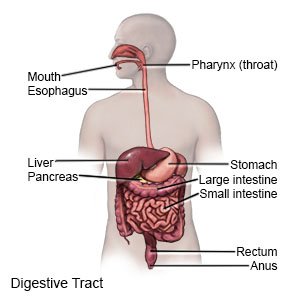Lower Gastrointestinal Endoscopic Ultrasonography
Medically reviewed by Drugs.com. Last updated on May 6, 2024.
A lower gastrointestinal endoscopic ultrasound is used to help diagnose and treat diseases that affect the lower gastrointestinal (GI) tract. The lower GI tract includes some parts of the small intestine, the colon, and the rectum.
 |
WHILE YOU ARE HERE:
Before your procedure:
- Informed consent is a legal document that explains the tests, treatments, or procedures that you may need. Informed consent means you understand what will be done and can make decisions about what you want. You give your permission when you sign the consent form. You can have someone sign this form for you if you are not able to sign it. You have the right to understand your medical care in words you know. Before you sign the consent form, understand the risks and benefits of what will be done. Make sure all your questions are answered.
- An IV is a small tube placed in your vein that is used to give you medicine or liquids.
During your procedure:
- You will be asked to lie on your left side and raise one or both knees toward your chest. Your healthcare provider will examine your anus and use a finger to perform a digital rectal exam to check your rectum.
- The echoendoscope will be placed into your anus. It will then be passed through the rectum and into the large intestine. You may feel some pressure or discomfort. Your provider will slowly move the scope forward while he or she watches its movement on a screen. He or she will also take pictures. Tissue samples may be taken and sent to a lab for tests. Your provider may also treat any conditions you have.
After your procedure:
You will be taken to a room to rest until you are fully awake. You will be monitored closely for any problems. Do not get out of bed until your healthcare provider says it is okay. You may be given medicine to make it easier for you to have a bowel movement. You may need this medicine to treat or prevent constipation.
RISKS:
You may have bleeding, an abnormal heartbeat, high blood pressure, or trouble breathing. Your small intestines, large intestines, or rectum may get injured because of increased pressure from the scope.
CARE AGREEMENT:
You have the right to help plan your care. Learn about your health condition and how it may be treated. Discuss treatment options with your healthcare providers to decide what care you want to receive. You always have the right to refuse treatment.© Copyright Merative 2024 Information is for End User's use only and may not be sold, redistributed or otherwise used for commercial purposes.
The above information is an educational aid only. It is not intended as medical advice for individual conditions or treatments. Talk to your doctor, nurse or pharmacist before following any medical regimen to see if it is safe and effective for you.
Learn more about Lower Gastrointestinal Endoscopic Ultrasonography
Care guides
Further information
Always consult your healthcare provider to ensure the information displayed on this page applies to your personal circumstances.
